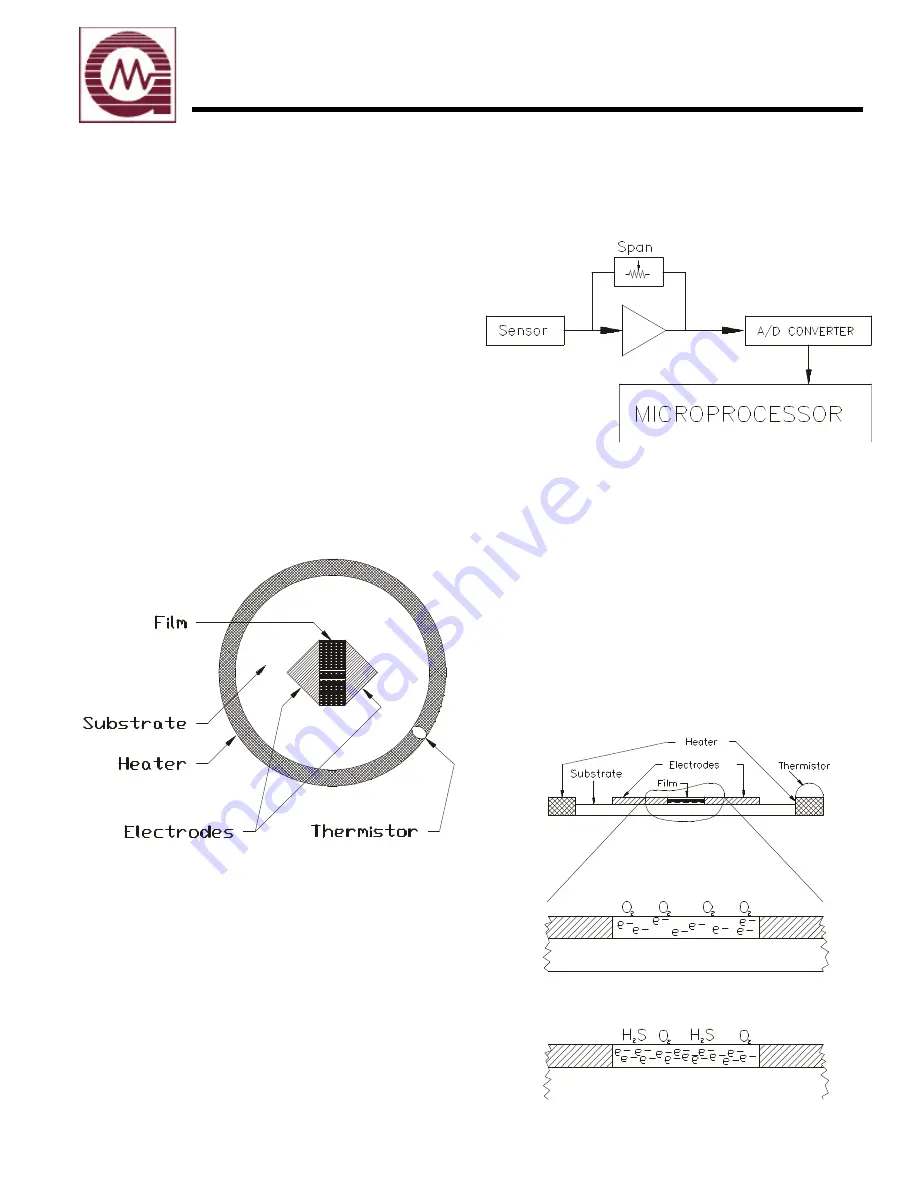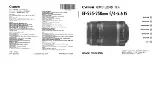
2.0 Sen sor As sem bly
2.1 Sen sor Sig nal Proc ess ing
General Monitors uses a proprietary Metal
Oxide Semiconductor (MOS) film on the
sensor for detecting hydrogen sulfide (H
2
S)
gas. The MOS film is deposited onto a
substrate between two electrodes (figure 1).
With no gas present, the measured resistance
between these two electrodes is very high (in
the mega-ohms). As H
2
S adsorbs onto the
film, the resistance between the two
electrodes decreases (to kilo-ohms). This
decrease in resistance is logarithmically
proportional to the concentration of H
2
S that
is present.
fig ure 1
The change in resistance is converted to a
change in voltage and amplified by the input
circuit (figure 2). This amplified signal is fed
to an Analog to Digital (A/D) Converter,
converted to a digital signal and sent to the
microprocessor to be processed. The process
of H
2
S adsorbing onto the MOS film is most
effective at an elevated temperature. On the
outer edge of the substrate is a heater ring.
fig ure 2
The temperature of this heater ring is
measured with a thermistor and kept constant
by a circuit located inside the body of the
sensor. As H
2
S adsorbs onto the film,
electrons move more freely from one
electrode to the other (figure 3). This is
represented as a decrease in resistance. The
process of H
2
S adsorbing onto the MOS film
is completely reversible. As the
concentration of H
2
S decreases (H
2
S
desorbs), the resistance between the
electrodes will increase.
fig ure 3
3
GENERAL MONITORS
Model S214








































